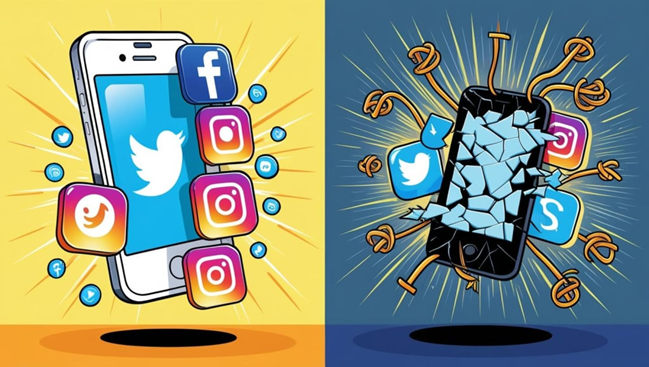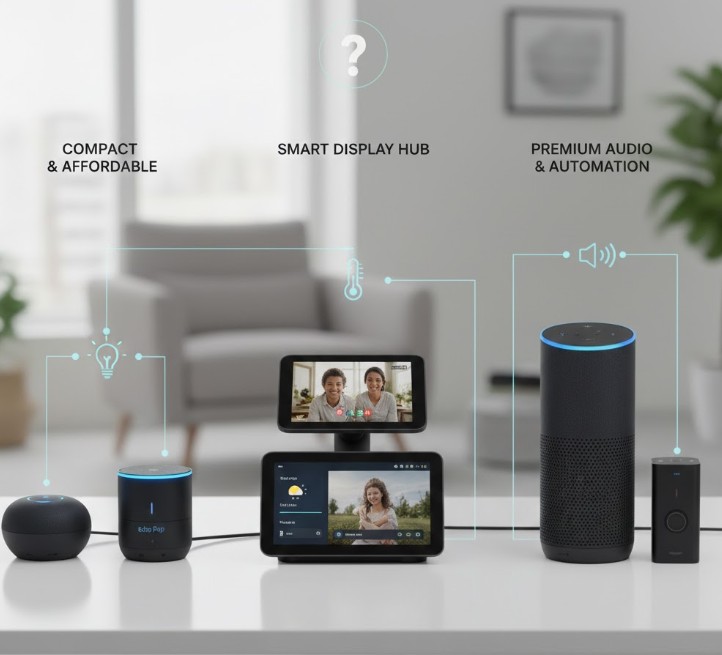My Geek Score: In today’s interconnected world, technology has become an inseparable part of daily life. From the way we communicate, work, and learn to how we entertain ourselves and manage our well-being, the digital landscape shapes much of our existence. However, as with any powerful tool, technology can have both positive and negative effects, particularly on mental health. While it has the potential to enhance mental well-being, it can also contribute to mental health challenges. In this article, we will explore both sides of the coin and discuss how technology serves as a double-edged sword in terms of mental health.
The Positive Impact of Technology on Mental Health
1. Access to Support and Resources
One of the most significant advantages of technology is its ability to provide access to mental health resources and support systems that were once difficult to obtain. Teletherapy, online counseling, and mental health apps are now widely available, allowing individuals to seek professional help from the comfort of their homes. This is particularly beneficial for those who live in remote areas, have limited mobility, or struggle with social anxiety, as it reduces the stigma and logistical barriers to treatment.
Moreover, various mobile apps offer guided meditations, mindfulness exercises, cognitive behavioral therapy (CBT) techniques, and mood tracking, empowering users to manage their mental health proactively. Resources like these help individuals develop coping strategies, reduce stress, and enhance emotional regulation.
2. Connection and Social Support
Technology has transformed the way we connect with others. Social media platforms, messaging apps, and video calls provide people with a sense of connection and belonging, especially in an increasingly globalized world. For individuals suffering from loneliness or isolation, these digital tools can be a lifeline, enabling them to maintain relationships with family, friends, or like-minded communities. Online support groups and forums have also emerged, offering people with specific mental health challenges a space to share their experiences and find comfort in knowing they are not alone.
3. Education and Awareness
The rise of online learning and digital content has made mental health education more accessible than ever. Websites, webinars, podcasts, and social media influencers have played a crucial role in raising awareness about mental health issues, reducing stigma, and encouraging open dialogue. People are more informed today about mental health than they were a decade ago, and many are now more willing to seek help or talk about their struggles.
The Negative Impact of Technology on Mental Health
1. Social Media and Comparison Culture
While social media has its benefits, it also has a darker side. One of the most concerning aspects of social media is its tendency to foster unhealthy comparison. Platforms like Instagram, Facebook, and TikTok often showcase the best versions of people’s lives—filtered, curated, and edited to perfection. This can lead individuals to feel inadequate, anxious, or depressed when their own lives don’t measure up to the idealized images they see online.
Studies have shown that prolonged exposure to social media can exacerbate feelings of loneliness, anxiety, and depression, particularly among adolescents and young adults. The constant need for validation through likes, comments, and followers can create a sense of dependency on external approval, leading to an unhealthy relationship with self-worth and identity.
2. The Impact of Digital Addiction
The rise of smartphones, video games, and endless scrolling on social media has contributed to the growing issue of digital addiction. Just like any other addiction, excessive use of technology can take a toll on mental health. The constant barrage of notifications, the pressure to stay “connected” 24/7, and the fear of missing out (FOMO) can lead to burnout, sleep deprivation, and increased anxiety.
Studies have linked excessive screen time with increased levels of stress and decreased attention span, as people find it harder to focus on tasks without being distracted by digital devices. This can also interfere with relationships and productivity, as individuals become consumed by their digital worlds at the expense of real-world interactions.
3. Sleep Disruption and Mental Health
The relationship between technology use and sleep is one of the most well-documented concerns when it comes to mental health. The blue light emitted by smartphones, tablets, and computers interferes with the production of melatonin, the hormone that regulates sleep. As a result, people may struggle to fall asleep or experience poor-quality sleep, leading to a vicious cycle of fatigue, irritability, and heightened stress levels.
Lack of sleep is a known risk factor for a variety of mental health issues, including anxiety, depression, and cognitive impairment. The prevalence of late-night screen use, particularly among teenagers, has led to increased sleep disturbances and worsening mental health outcomes.
4. Cyberbullying and Online Harassment
The anonymity of the internet can sometimes lead to negative behaviors, such as cyberbullying and online harassment. Social media platforms and gaming communities, while offering opportunities for connection, have also become breeding grounds for toxic behavior. The impact of online bullying on mental health can be profound, particularly for younger individuals. Victims of cyberbullying may experience increased anxiety, depression, low self-esteem, and even suicidal thoughts. The constant barrage of negativity can be difficult to escape, as social media is often a central part of everyday life.
Striking a Balance: How to Manage Technology’s Impact on Mental Health
While the impact of technology on mental health can be both positive and negative, the key lies in finding a healthy balance. Here are some strategies for managing technology’s influence on well-being:
1. Setting Boundaries
Establishing boundaries around technology use is crucial. This might involve setting limits on screen time, designating tech-free zones in the home, or creating designated times for social media use. Encouraging a healthy relationship with technology involves being intentional about how and when it’s used, rather than allowing it to consume time or dominate attention.
2. Mindful Consumption
Just as we are mindful about our diet and exercise, we can apply mindfulness to our consumption of digital content. Being conscious of how certain apps or online interactions make us feel can help us avoid content that triggers negative emotions. Opting for content that uplifts, educates, or provides support can transform technology from a source of stress to a tool for growth.
3. Digital Detox
Taking regular breaks from screens especially social media can help reset the brain and provide much-needed relief from digital overload. A “digital detox” might involve taking an entire weekend off from social media or designating one day a week to be free of screens altogether. This practice can foster greater mindfulness and improve mental well-being.
4. Utilizing Technology for Good
Technology itself is not inherently harmful; it’s about how it is used. Embrace the positive aspects of technology, such as using mental health apps for self-care, seeking virtual support when needed, or participating in online communities that foster positivity and connection. By leveraging tech tools to prioritize mental health, we can enhance our well-being rather than detract from it.
Conclusion
Technology‘s impact on mental health is undeniably complex an ever-evolving landscape that offers both opportunities and challenges. While it has the potential to improve mental health through accessibility to resources, connection, and education, it also poses risks such as digital addiction, comparison culture, and the exacerbation of mental health conditions. Recognizing the dual nature of technology allows us to approach it with awareness and responsibility. By setting boundaries, practicing mindful consumption, and using technology to enhance well-being, we can mitigate its negative effects and harness its full potential as a tool for positive change.







Leave a Reply